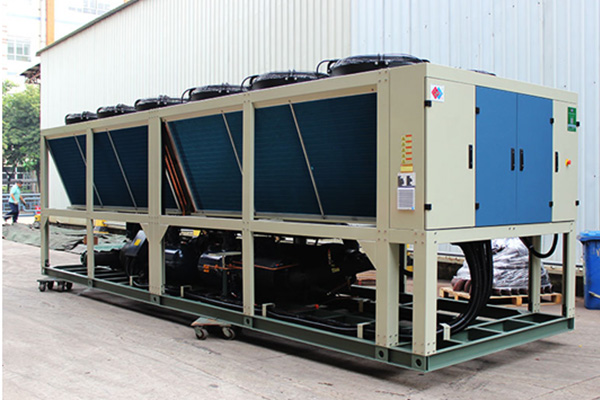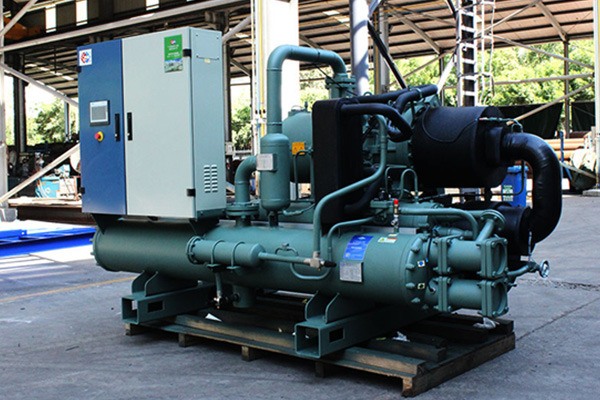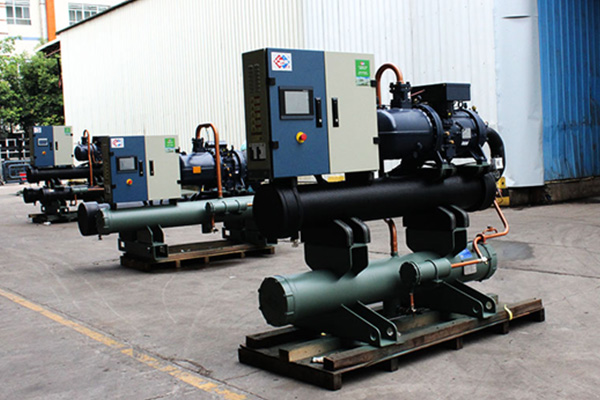As global attention to environmental protection and climate change continues to rise, the choice of refrigerants for cold storage not only affects efficiency and cost-effectiveness but is also influenced by international environmental regulations. Agreements like the Paris Agreement and the Montreal Protocol, with the Kigali Amendment, impose new requirements on refrigerant usage. This article will introduce the physical characteristics, application advantages and disadvantages of commonly used refrigerants, and analyze them in the context of international environmental regulations.

1. R22 Screw Type Air Source Heat Pump (Hydrochlorofluorocarbon - HCFC):
Physical Characteristics: R22 was once one of the most widely used refrigerants, known for good heat exchange performance, low toxicity, and moderate Global Warming Potential (GWP).
Category: Hydrochlorofluorocarbon (HCFC).
Advantages: High energy efficiency, cost-effective, strong adaptability to equipment.
Disadvantages: Moderate ozone layer depletion, relatively high GWP, being phased out by international environmental regulations.
Regulatory Comparison: According to the Montreal Protocol, R22 is gradually being phased out. The Kigali Amendment further accelerates the replacement process for HCFC refrigerants.
2. R404A (Hydrofluorocarbon - HFC):
Physical Characteristics: R404A is a blended refrigerant with a lower evaporation temperature and high energy efficiency.
Category: Hydrofluorocarbon (HFC).
Advantages: Excellent performance in low-temperature applications, ozone-friendly, suitable for commercial refrigeration and cold storage.
Disadvantages: High GWP, subject to restrictions under the Paris Agreement and the Kigali Amendment.
Regulatory Comparison: While R404A does not deplete the ozone layer, its high GWP is under scrutiny by the Kigali Amendment, and it may be replaced by lower GWP alternatives.

Physical Characteristics: R134a is a colorless, odorless refrigerant with moderate efficiency and low toxicity.
Category: Hydrofluorocarbon (HFC).
Advantages: Ozone-friendly, widely used in commercial and industrial refrigeration systems.
Disadvantages: Although GWP is lower than other HFCs, it is still relatively high and may face restrictions under environmental regulations.
Regulatory Comparison: As an HFC refrigerant, the use of R134a is influenced by the Paris Agreement and the Kigali Amendment, and it may be replaced by more environmentally friendly alternatives.
4. Ammonia (R717):
Physical Characteristics: Ammonia is a highly efficient natural refrigerant with excellent heat conduction and low GWP.
Category: Natural refrigerant.
Advantages: No GWP or ozone depletion potential, high efficiency, low operating costs, especially suitable for large-scale industrial refrigeration.
Disadvantages: Toxic and flammable, requires strict safety controls and professional maintenance.
Regulatory Comparison: As a natural refrigerant, ammonia fully complies with the Paris Agreement and the Kigali Amendment, making it an ideal choice for future cold storage refrigeration.
5. Carbon Dioxide (R744):
Physical Characteristics: Carbon dioxide is a colorless, odorless natural refrigerant with low GWP and high heat exchange efficiency.
Category: Natural refrigerant.
Advantages: Extremely low GWP, minimal environmental impact, suitable for high-pressure refrigeration systems.
Disadvantages: Requires high-pressure operation, higher requirements for system materials and components.
Regulatory Comparison: As a natural refrigerant, carbon dioxide fully complies with international environmental regulations, making it an ideal choice for low-temperature storage and cold storage refrigeration.
6. Future Trends:
As environmental concerns intensify, the future market for cold storage refrigerants is expected to lean towards natural refrigerants and low-GWP synthetic refrigerants. Natural refrigerants such as ammonia and carbon dioxide, due to their excellent environmental characteristics and high efficiency, will play an increasingly important role in new cold storage projects. Meanwhile, refrigerant manufacturers are actively developing new synthetic refrigerants to meet increasingly stringent international environmental regulations.
The selection of refrigerants for cold storage is in a transitional phase, facing challenges of efficiency, environmental impact, and safety. When choosing refrigerants, considerations should not only focus on their physical performance and cost-effectiveness but also take into account the requirements of international environmental regulations. By adopting environmentally compliant refrigerants, the cold storage industry can achieve more sustainable and eco-friendly development.

评论
发表评论